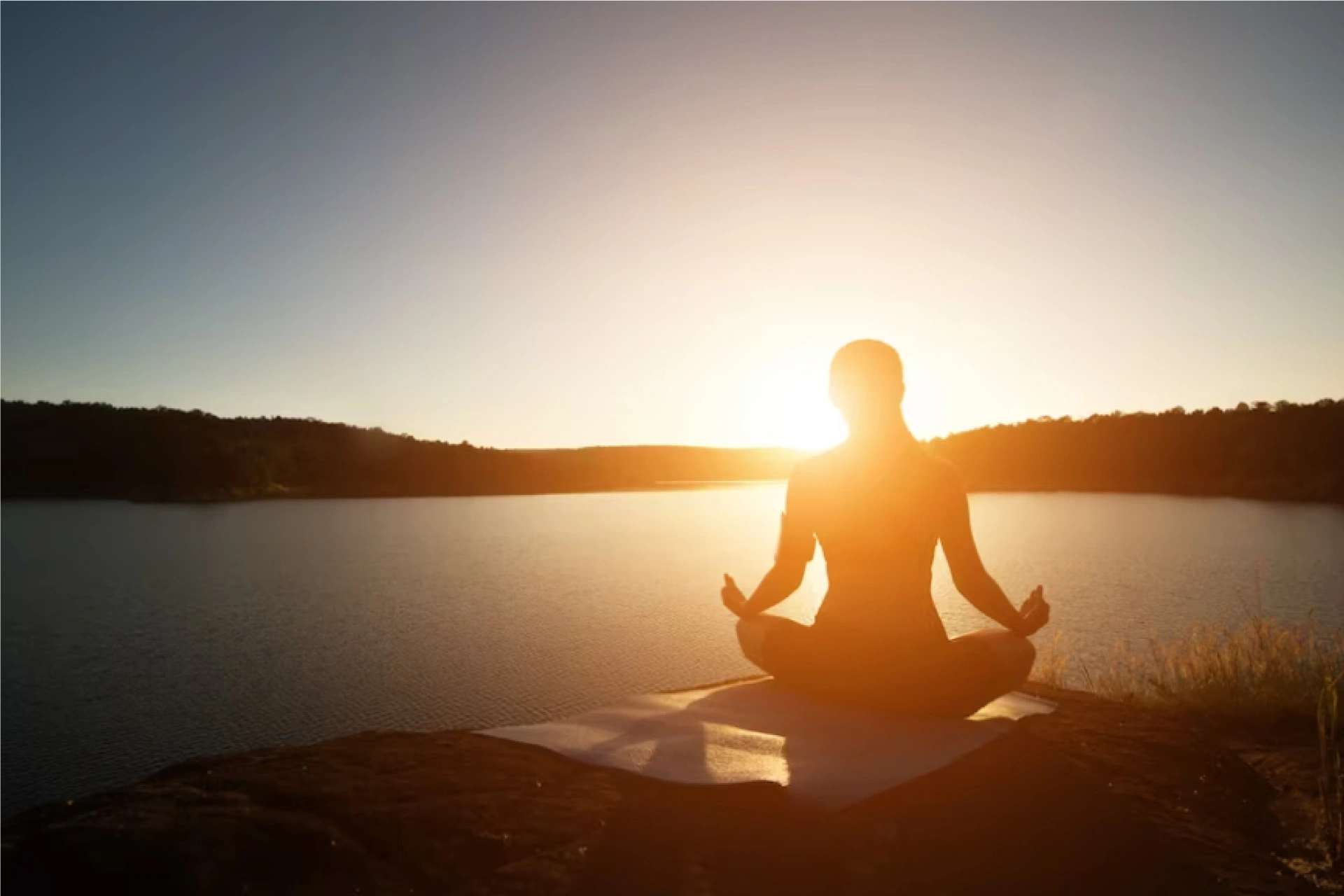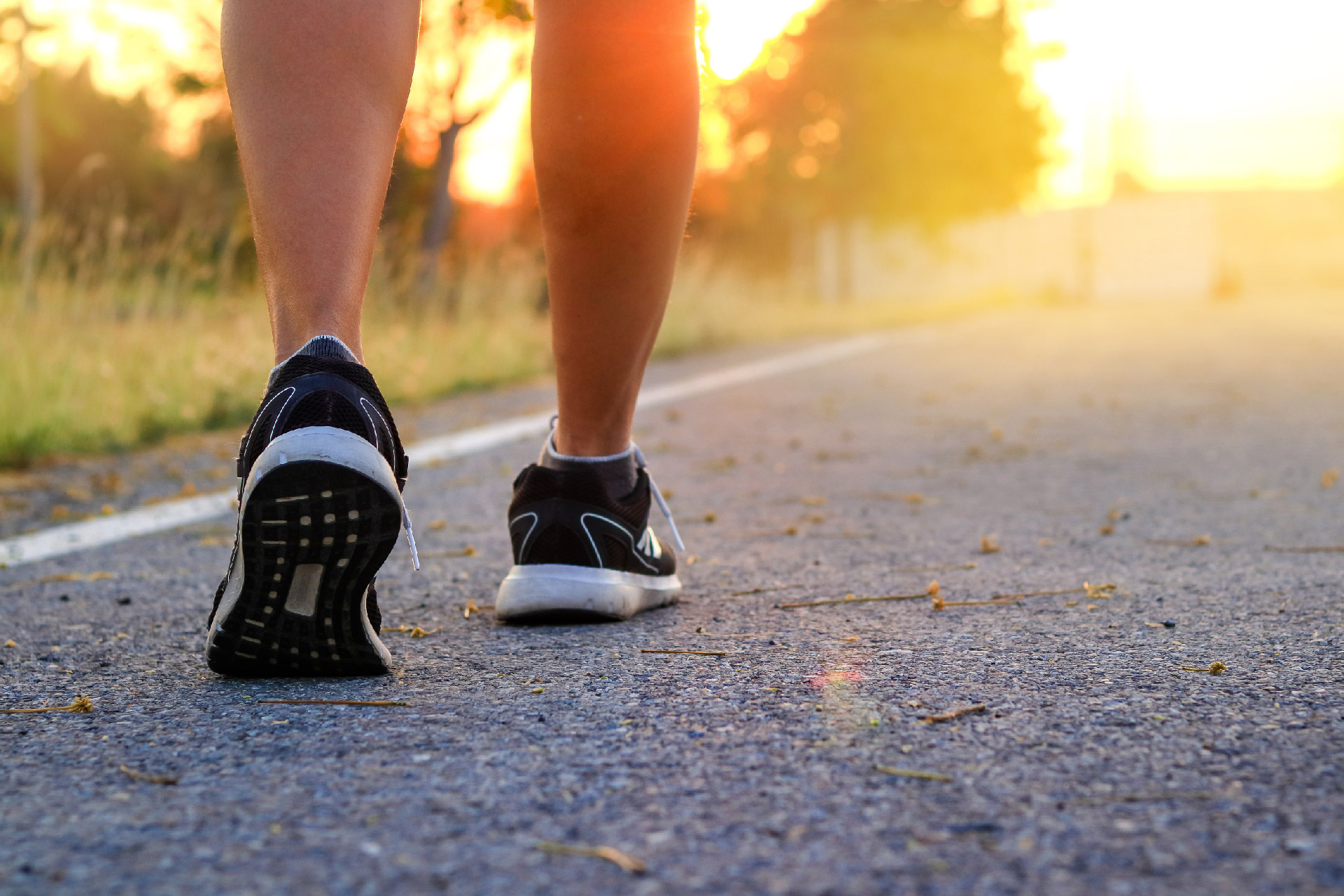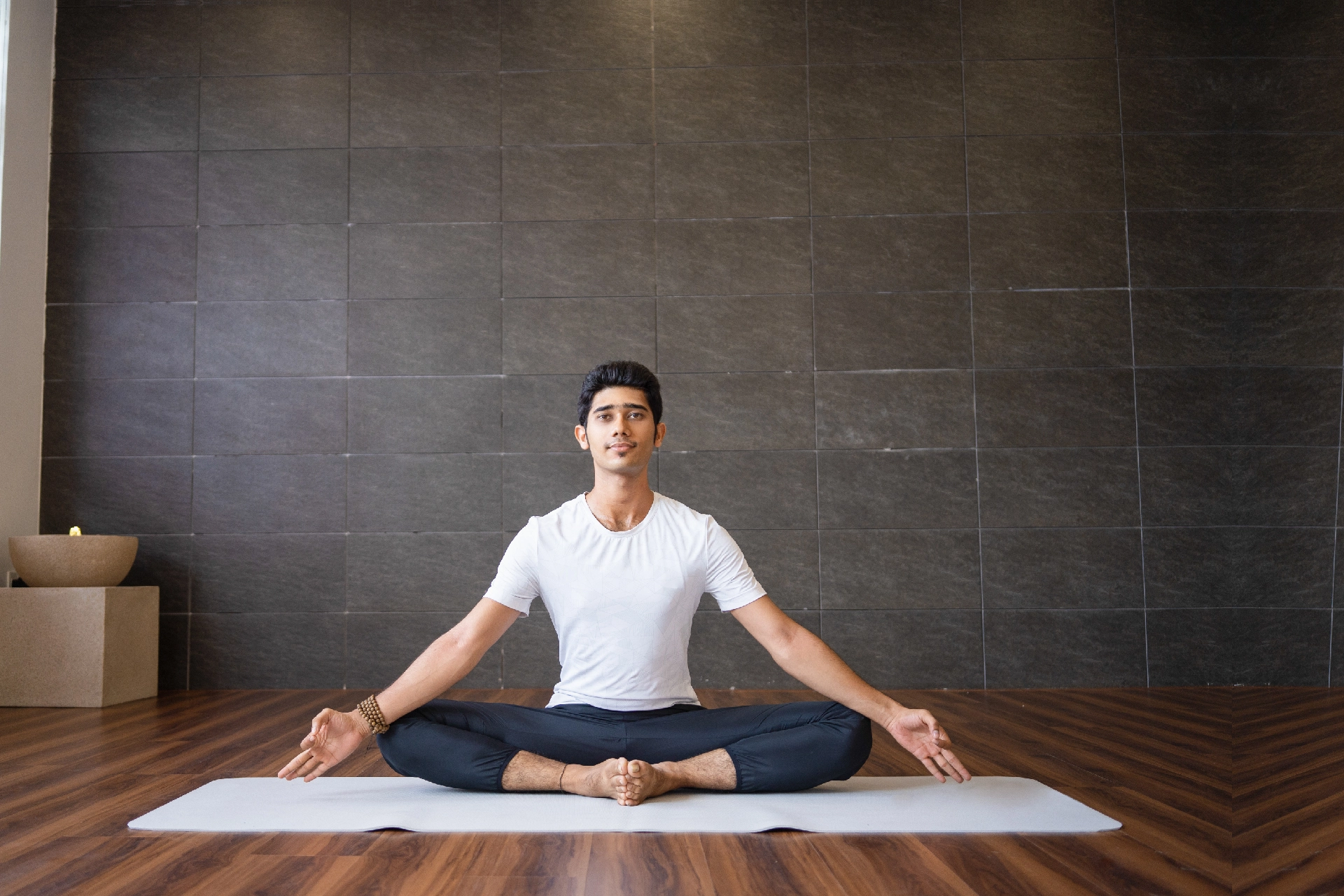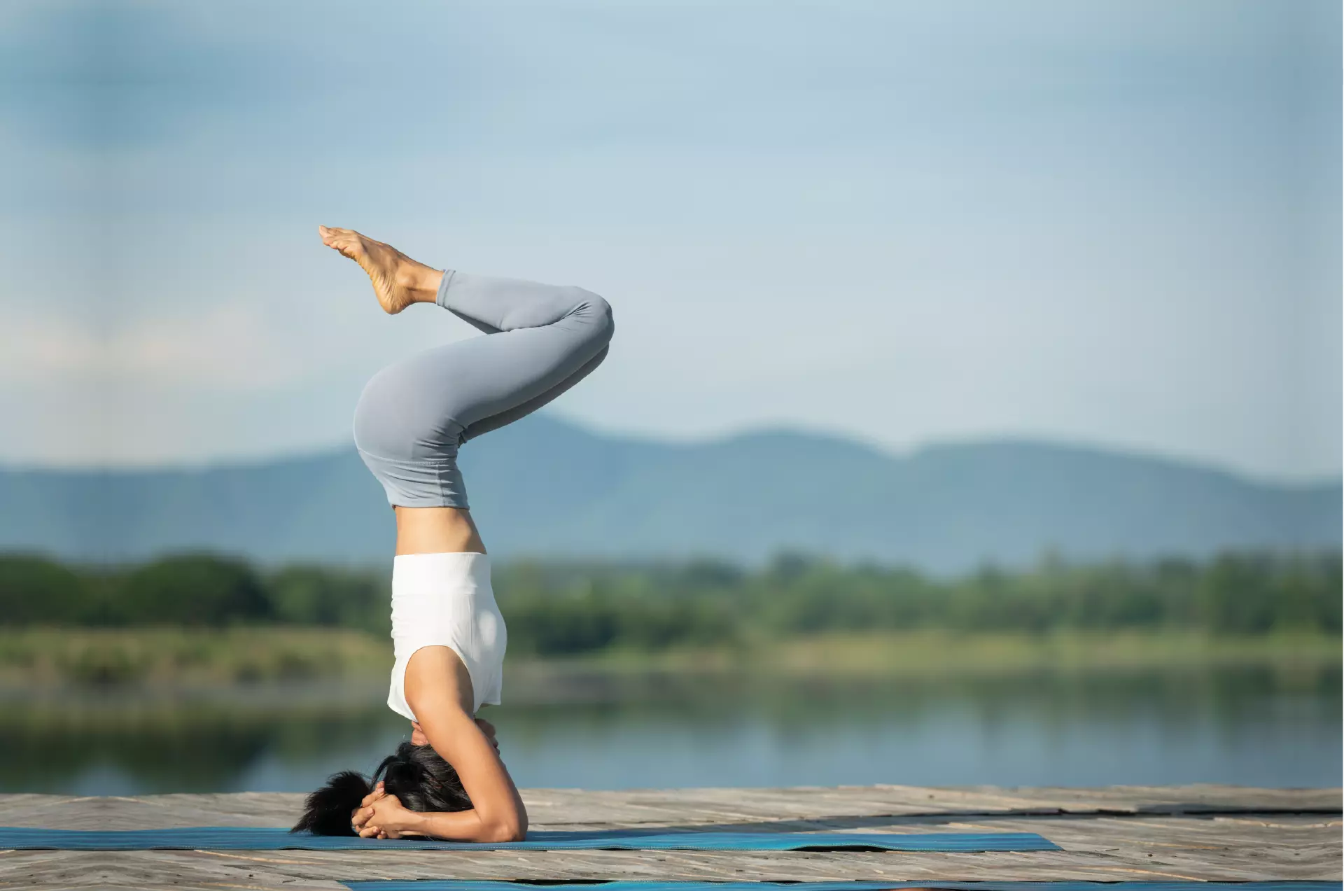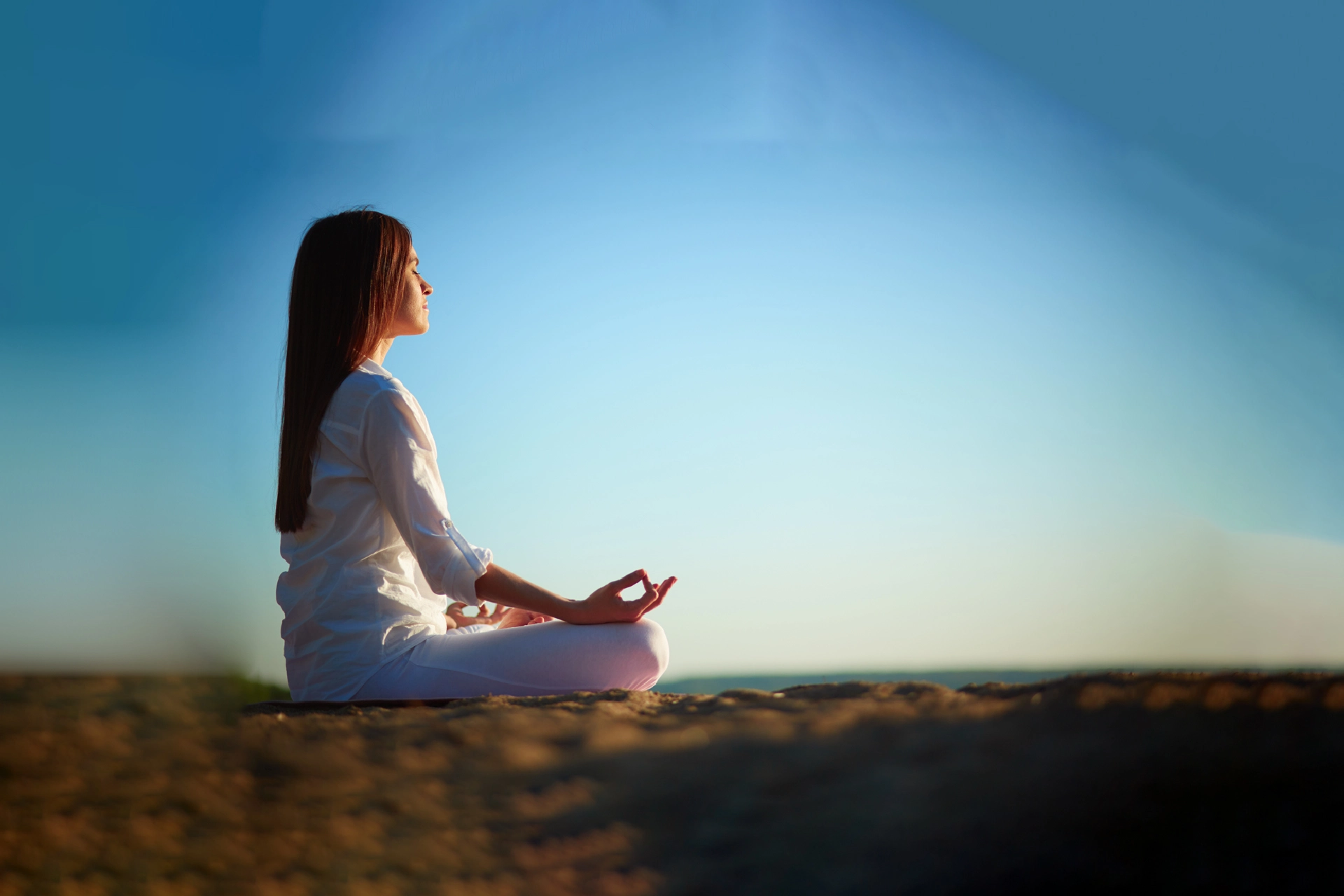Physiotherapist | 13 min read
11 Easy Yoga Asanas For Sinusitis With Benefits And Steps
Medically reviewed by
Table of Content
Key Takeaways
- Doing yoga for sinusitis is an effective way to get sinusitis relief
- Consuming immunity booster foods can also help prevent sinus infections
- Practicing yoga in winters can protect you from sinusitis and related diseases
Contracting sinusitis means you have inflammation and blockages in your sinuses. The usual causes for this medical condition include colds, viruses, or allergies. It is a common health issue and may resolve on its own in some cases. Though medications help in sinusitis treatment, they may have some side effects. Doing yoga for sinusitis is an option that not only gives you relief but also has no side effects.
The advantage of yoga is not just sinusitis relief, but the fact that regular practice can even boost your immunity. This is why experts stress the importance of yoga for beating sinus infections and improving overall health. To know about the yoga poses that will help you get sinusitis relief, read on.
What Is Sinus?
Sinusitis is an inflammation or enlargement of the sinus tissue. There are four pairs of cavities or gaps called sinuses in the skull. They're linked by tiny channels. The nasal passageways are used to evacuate the thin mucus that the sinuses create. This drainage aids in keeping the nose germ-free and clean. However, sinuses can obstruct and fill with fluid in addition to their normal air-filled state. An illness might develop after the emergence of germs (bacterial sinusitis).
This illness is also referred to as rhinosinusitis, with "rhino" meaning "nose." The tissue of the nose will often constantly be swollen if the sinuses are irritated.
Allergies of all kinds, tooth infections, and nasal polyps are a few additional health issues that can cause sinusitis. Sometimes physical factors like nasal bone enlargement and septum issues lead to sinuses. Anyone, regardless of age or gender, can have a sinus condition. Sinusitis can also be brought on by viral infections and fungi.
Yoga For Sinus Headache
Allergies are auto-immune disorders that irritate nasal passages and aggravate asthmatic pre-conditions. The illness induced by a virus, however, is asthma. Yoga for sinusitis allows the body to breathe and heal while also relieving symptoms.
Yoga helps your body regain its equilibrium and offers treatment for migraines and nasal allergy disorders.
It keeps both your body and mind young. Because yoga widens your nostrils and promotes a steady airflow, it makes breathing easier. Even the throat area is cleared, making it easier for you to handle sinusitis. Yoga for sinus headaches is considered the best way to overcome sinus problems.
All of the aforementioned and a lot more exercises are there that you won't understand until you start exercising. For more information, see the yoga asanas for sinus.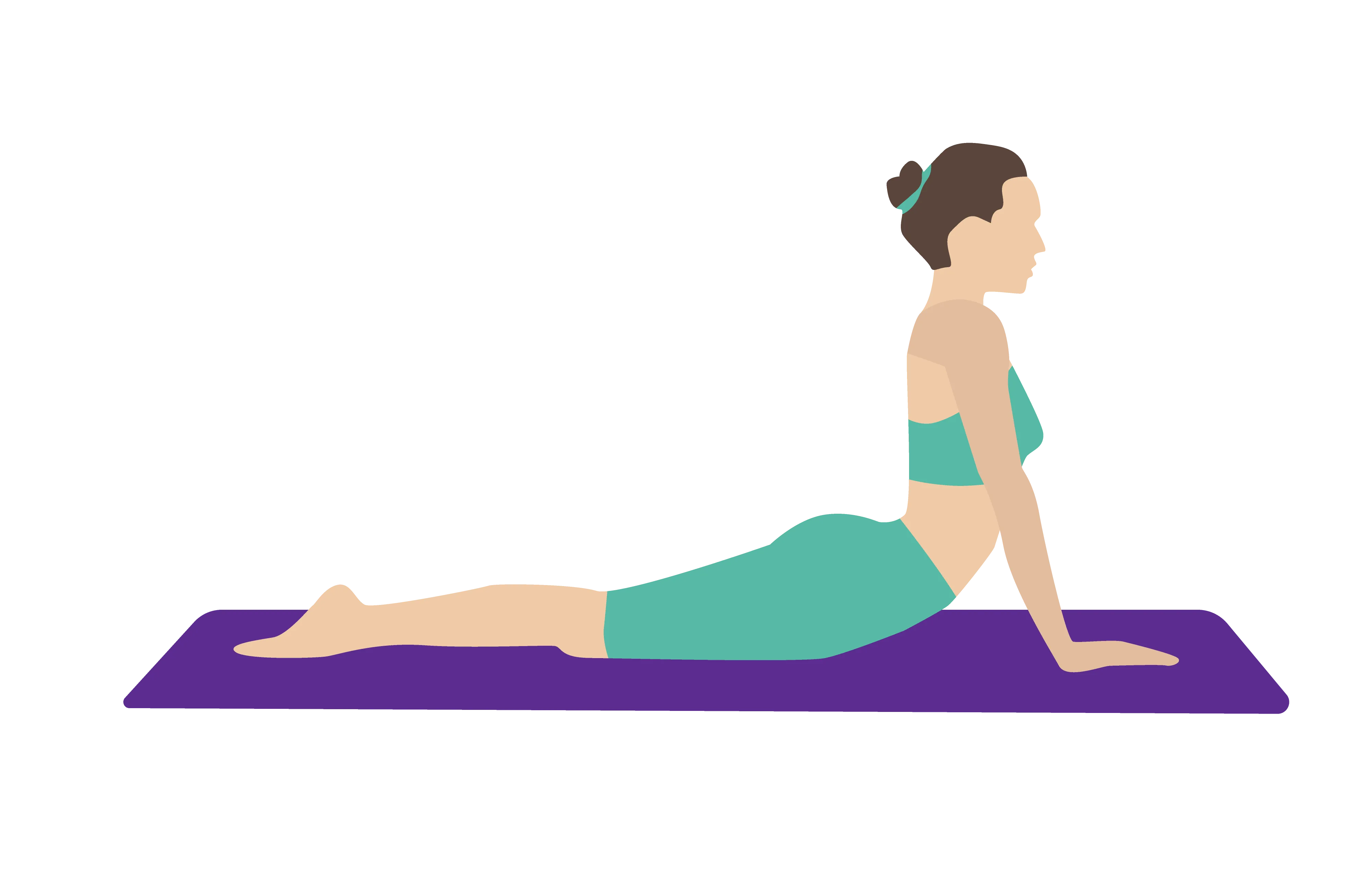
Gomukhasana (Cow Face Pose)
About the Pose
Gomukhasana, also known as the Cow Face Pose, was named after the cow because it mimics the animal's face when performed. The Sanskrit word "Go" also signifies "light" and "cow." This Vinyasa yoga pose is appropriate for beginners. It is most effective when practised on an empty stomach first thing in the morning. For a period of 30 to 60 seconds, hold the position.
Benefits Of the Sinusitis Pose
Gomukhasana eases tension and stress. It helps increase airflow flexibility by stretching the chest muscles. When you are stressed or exhausted, the stance helps you relax.
How to do it:
- Preferably in Dan asana, sit upright on the ground with your legs out in front of you
- Place your left leg beneath your right buttock by slightly bending it
- The right leg should be folded and placed over the left thigh
- As they are placed one on top of the other, place both of your knees closer together
- Put your left arm behind your back in a gentle fold
- Stretch your right arm as far as it will go till it reaches your left hand by crossing it over your right shoulder. With little practice, you'll be able to catch your left hand as well as reach for it
- Maintain a straight back, open your chest, and lean back a little
- Hold this position for as long as it feels comfortable while taking calm, deep breaths. Pay attention to your breathing
Janu Sirsasana (Head to Knee Pose)
About the Pose
As its name suggests, Janu Sirs asana, or the Head to Knee Pose, calls for you to touch your head to your knee while seated. It is an Ashtanga yoga asana for beginners and is best performed in the morning or evening on an empty stomach. Make sure you maintain the position on each leg for at least 30 to 60 seconds.
Benefits Of the Sinusitis Pose
The yoga pose Janu Sirsasana helps to extend your shoulders and soothes your thoughts. More importantly, any head-down position will support fluid drainage and airway cleaning for better breathing. The position eases tension, weariness, and headaches. Insomnia and excessive blood pressure, which might exacerbate your sinusitis issue, are treated by the asana.
How to do it:
- Sit on your yoga mat by folding one leg
- The heel ought to rest on your groyne
- The opposing leg should be extended to the side
- Exhale, bending at the hips and lowering yourself while keeping your arms raised high above your head
- Grip your foot firmly with both hands as you stoop
- As you take a breath, slowly return to the beginning position after holding the position for ten counts
- Repeat on the other side after switching
Bandhasana Setu (Bridge Pose)
About the Pose
The asana is a Vinyasa yoga position for beginners. Practice it with a clean bowel movement in the morning or the evening. Keep in mind to maintain the stance for 30 to 60 seconds.
Benefits of the Pose for Sinusitis
Setu Bandhasana stimulates the hyoid and chest glands while easing back tension. The stimulation of the heart positively fills the heart chambers with simple oxygenated blood and helps to relieve such diseases.
How to do it:
- Your feet should be hip-distance apart on the mat as you lay on your back with your knees bent. As close as you can, bring your feet up to your glutes
- Put your arms at your sides with your palms facing inward
- Lift your hips as you inhale, starting the movement from the pubic bone rather than the navel. Firmly press down through your feet
- Downwardly press your upper arms. You can place your pinkie fingers into the mat while clasping your hands behind your back. Roll your shoulders under you and enlarge your collarbones
- Keep your thighs hip-distance apart by continuing to press down forcefully through your heels and drawing them closer to one another. To stretch your spine, reach the backs of your thighs towards your knees
- Exhale as you let go of your hands and slowly drop yourself to the mat to complete the pose
Mukha Svanasana Adho (Downward-Facing Pose)
About the Pose
The downward-facing dog pose, also known as Addo Mukha svanasana, is an asana that resembles a dog leaning forward and lowering its head. It is an Ashtanga/Hatha yoga posture for beginners. Make sure to practice it first thing in the morning, without food. For a minute to three, hold it there.
Benefits Of the Sinusitis Pose
The position helps the body's blood circulate better while relaxing any tension or stress that has built up in the body. Your neck and spine are stretched, which relieves pressure there. The head's downward position relieves congestion by clearing the nasal passages.
How to do it:
- Standing with your feet slightly apart, gradually bend your knees until your palms are on the floor, then extend your arms as straight as possible
- Keep your legs straight, your arms, chest, and back solid, and hold the downward dog or mountain peak position for a few counts
- Check that your head is comfortable in your arms
- You should be able to see your legs clearly
Pranayama
Pranayama is a breathing exercise that helps decongest your sinuses and prevent infections. There are different types of pranayama for sinus. Here are three most common ones.
Anulom Vilom
In this exercise, you keep one nostril closed and breathe in through the other. Then close the second nostril and breathe out through the first one. This clears the congestion in your sinuses and eases the flow of air. It also boosts your immunity and improves blood flow to the brain.
How to do it:
To perform this yoga, sit cross-legged and upright on the floor. After this, put your left hand on your knee and close your night nostril with the right thumb. Breathe deeply through your left nostril. Release your thumb and close your left nostril with your right ring finger. Exhale slowly through your right nostril. Now inhale from your right nostril with your left one blocked by the right ring finger. Release your ring finger, block your right nostril with your thumb and exhale through your left nostril. Do 10 rounds of this pose and relax. You can perform this exercise 3-4 times a day.
Additional Read: Yoga Poses for SciaticaBhramari Pranayama
This is also known as the humming bee breath. According to a study in 2019, this pranayama is an effective treatment for chronic rhinosinusitis [2]. It helps ventilate your sinuses by its anti-inflammatory effects and mechanical cleaning.
How to do it:
To start, sit in a quiet and ventilated room in a comfortable position. Close your eyes and take a deep breath. Now, close your ear flaps with your thumbs. Place your index fingers just above your eyebrows and the other fingers on your eyes. Apply gentle pressure on the side of your nose and concentrate on the area between your eyebrows. With your mouth closed, exhale through your nose. While exhaling, hum the sound of Aum. You can repeat this exercise 5 times.
Kapalbhati
This exercise is also known as skull shining breathing exercise. It clears your sinuses and any blockages in your respiratory system. It also enhances brain functions, such as memory, and treats cold and cough.
How to do it:
To do this exercise, sit in any comfortable asana with your eyes closed and back straight. Place your hands on your knees with the palms facing up. Take a normal breath and exhale in a rhythmic, short, forceful breath. You can also compress your stomach to exhale forcefully from your lungs and diaphragm. Ensure that you inhale naturally while compressing your stomach. You may start doing this exercise for 2 minutes and gradually increase the time to 10 minutes.
Bhujangasana
This is one of the best poses for your lungs. It helps you breathe easily, which makes it an effective yoga for sinus problems. It is also helpful in treating thyroid and gynecological conditions as well as helps you lose weight.
How to do it:
You can start this yoga pose by lying on your stomach on the floor. Keep your palms near your shoulder and your legs slightly apart. Take a deep breath and push your upper body up. Look up and hold this pose as long as you can. While exhaling, return to your original position on the floor. You may repeat this exercise 5 times for effective results.

Ustrasana
Also known as the camel pose, this practice is very good for sinusitis. It gives you sinusitis relief by clearing your stuffy nasal passage. It also helps improve eyesight and digestion.
How to do it:
You can start this pose by kneeling on the floor with your feet apart. Inhale, look up, and start bending backwards. While bending back, keep your hands on your lower back. Now try and grab your heels while pushing your glutes forward. Do not put any strain on your neck. Hold this position for about 20 seconds. Exhale, put your hand on your lower back and return to the original pose.
Additional Read: Yoga for PCOSSarvangasana
This pose helps calm your mind and soothe your nerves. It is also known as the mother of all asanas. It aids in sinusitis relief and other conditions from allergy. It also prevents your body from further infection and improves the blood flow in your lungs.
How to do it:
You can start this pose by lying down on the floor with your legs side by side, and arms resting on both sides of the body. Lift your legs so that they are perpendicular to the floor. Gently move your back and pelvis from the floor and support your back with your palms. Ensure that your forearms are on the ground and that your body forms a straight line. Try touching your chin to your chest and focus on your feet.
Doing these poses of yoga in winters can also give you relief from body stiffness, aches and pains. Consuming immunity booster foods and performing these asanas can protect you from recurring viral infections. Other than yoga for sinus infection, you can also try ayurvedic treatment for cough such as including ginger, honey, or tulsi in your diet.
Can Sinusitis be Cured at Home?
There are numerous efficient natural cures in addition to some over-the-counter medications that can aid with symptom reduction. Along with yoga poses for sinus, you can also follow the below methods for a natural sinus cure.
Steam
Air that is too dry and dry sinuses can induce pressure, resulting in headaches and pain in some parts of the face and head. Steam can aid by moisturizing your sinus cavities, adding moisture to the air, and thinning the stiff mucus.
Try taking a hot shower and breathing in the steam to relieve the pressure. Another long-term solution is to use a humidifier. Get a humidifier right away.
Eucalyptus oil can give your bath an extra kick and fasten your recuperation. Cineole, a component in the eucalyptus, is thought to speed up recovery from acute sinusitis. The oil may also aid in clearing your passageways and reducing nasal congestion.
Sodium (Saline) flush
A common treatment for sinus discomfort and congestion is a saline wash. Saline spray's salt content helps to reduce sinus pressure and increase nasal moisture. You can get saline spray from pharmacies or manufacture your own at home using baking soda, purified water, and salt without iodine.
Ingest quercetin
Quercetin, a naturally occurring compound that is abundant in antioxidants, is found frequently in onions, apples, and green tea. The herb works by reducing the histamine release that initiates a sinusitis episode.
Resting
A sound night's sleep may speed up the body's healing. Sleep triggers the release of chemicals in your brain that encourage tissue growth. Additionally, while you're at rest, your body is able to manufacture more white blood cells, which are crucial for fighting off bacteria and viruses.
Avoid engaging in stimulating activities or consuming alcohol straight before bed. If you allow your body time to unwind, your recuperation period will go more swiftly and you'll feel more refreshed. If you require additional assistance, look into some natural sleep aids.
Hydration
Your sinus passages drying out and the pressure in your face increasing are both effects of dehydration. Take in more water during the day if you have a cold. Consuming fluids will help to relieve your sinus blockages.
While water may be your first option for staying hydrated, there are other meals and beverages that you may consume to do the same, such as soups, ice cubes, water-based beverages, water-based vegetables, and fruits.
Elevation
Sleeping well can help with sinus issues, which is crucial for recovery. Lying flat can disturb your sleep cycle, raise sinus pressure, and cause more mucus to accumulate in your nose passages.
Utilize pillows at bedtime to raise your head above your heart. By sleeping in this position, you can breathe more easily and avoid sinus congestion.
Exercise
Exercise, like yoga, helps lower sinus pressure. Physical activity can improve blood flow and momentarily reduce congestion to make breathing easier. Physical activity can enhance your recovery time, despite being painful while ill.
While all these help, they may not always be the answer for sinusitis treatment. If your infection persists, consult your doctor to get the best possible treatment. You can book an appointment for in-clinic or online doctor consultation on Bajaj Finserv Health. This way you can address your sinus problems with ease and get the right treatment on time.
References
- https://www.ncbi.nlm.nih.gov/pmc/articles/PMC6521749/
- https://www.ncbi.nlm.nih.gov/pmc/articles/PMC6521749/
Disclaimer
Please note that this article is solely meant for informational purposes and Bajaj Finserv Health Limited (“BFHL”) does not shoulder any responsibility of the views/advice/information expressed/given by the writer/reviewer/originator. This article should not be considered as a substitute for any medical advice, diagnosis or treatment. Always consult with your trusted physician/qualified healthcare professional to evaluate your medical condition. The above article has been reviewed by a qualified doctor and BFHL is not responsible for any damages for any information or services provided by any third party.

